
[The Sea Ranch Lodge, Photo by BUILD LLC]
Anyone in a design-related profession toils with the constraints imposed on the objects of their labor. For architects, these come in the form of ever-increasing land use codes, building codes, and community covenants. And to say that these rules have a real effect on houses and buildings is an understatement. In extreme examples, such regulations can all but shape a project. This enforced control of the built environment often seems antithetical to the very innovation and creativity that architecture aims to achieve, and yet it is precisely these constraints that make a place harmonious and exceptional under the right circumstances. For quite some time now, the circumstances we’ve been most fascinated with are those of planned communities. Some planned communities are among the most thoughtful built-environments we’ve experienced, while others are middling or feel like a weak replica of past times to the design-minded. All are subject to their respective codes and community covenants, so it isn’t the mere presence or absence of constraints that seem to make or break a planned community, but other factors.
We’ve selected three planned communities as examples of the harmony that can be obtained with the correct balance of these factors.
The first, an architect’s go-to for planned communities, is The Sea Ranch which was established in 1965 and is a community of approximately 700 cabins and homes located about 100 miles north of San Francisco on California’s Sonoma County Coast.
The second is Central Oregon’s Black Butte Ranch which was started in 1970 and is a community of about 1,200 cabins and homes nestled in the Deschutes National Forest about 150 miles southeast of Portland.
The third is a relatively recent community with plans to grow. The Pass Life, was started in 2011 and is a community of 30 loft cabins perched on Snoqualmie Pass, just 65 miles east of Seattle. These three communities have a great deal in common and one of these factors is the presence of strong community covenants. But as mentioned earlier, covenants alone do not guarantee the character of the community.
Take, for example, the Sea Ranch Covenants, Conditions & Restrictions (CC&Rs) which address the acceptable exterior color palettes of cabins relative to their lot location (Section 3.03, subsection 5 if you want to get all technical):
The colors of all exterior surfaces shall be shades of grey or brown of values between black and white or shades of grey-greens or brown-greens (such as russet, citrine, and olive) of values between black and medium, and the value range for each lot shall be further limited by the applicable letter key, if any, set forth on a subdivision map, as follows:
(aa) the value range for “A” lots shall be white to medium;
(bb) the value range for “B” lots shall be medium light to medium dark; and
(cc) the value range for “C” lots shall be medium to dark.
At face value, these covenants don’t seem decisive or compelling enough to separate the wheat from the chaff. They could just as easily be a recipe for dull, suburban homogeneity rather than helping define the ideal that The Sea Ranch has become. The CC&Rs of each of the planned communities are full of passages like this one, and getting to the root of their harmony begs for a deeper more cerebral read of the planned communities we love best.
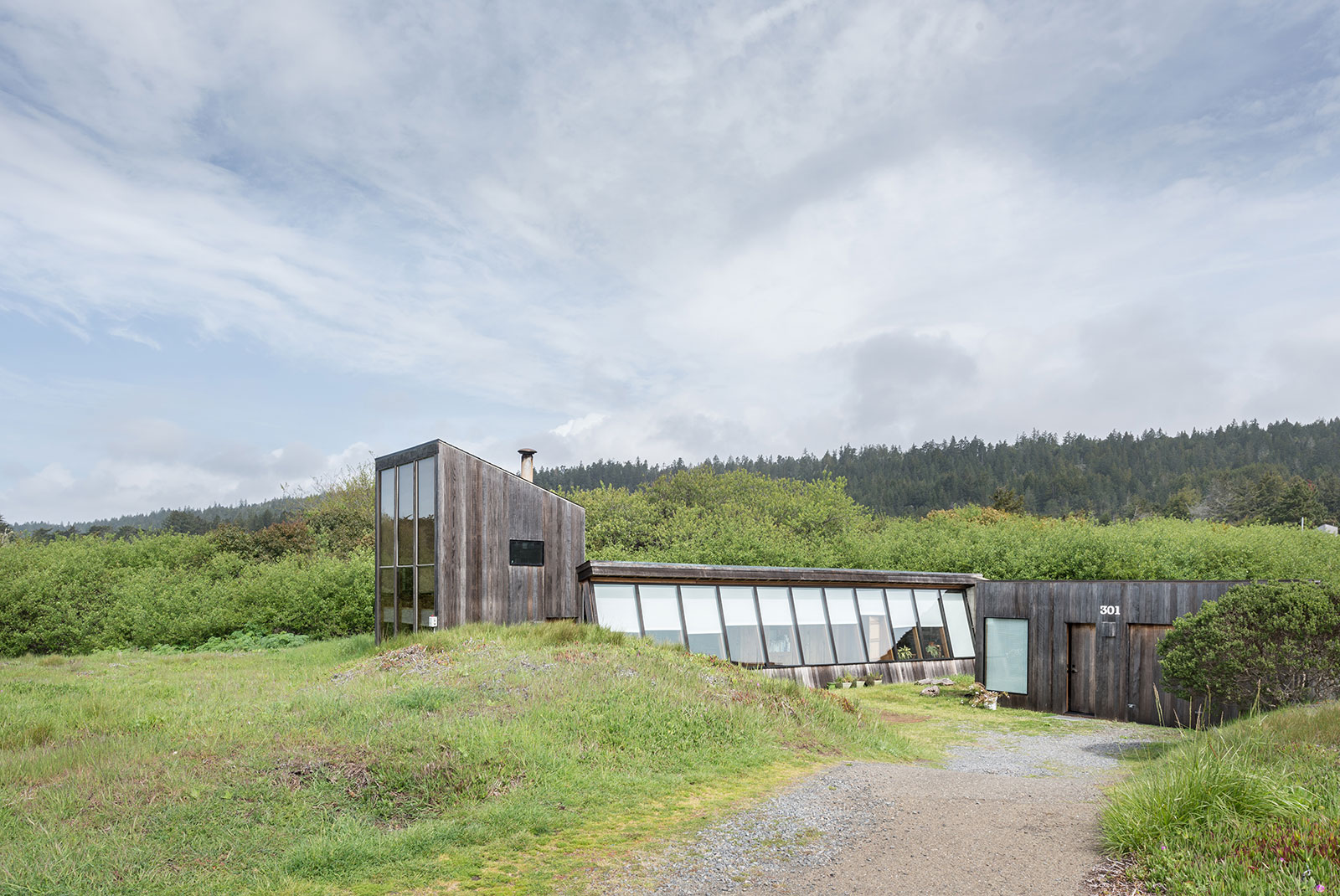
[Cabin at The Sea Ranch, Photo by BUILD LLC]
As students of, travelers to, and even owners within planned communities, it’s an issue near and dear to us. As architects and designers, the issue is also too important to dismiss as mere subtly, serendipity, or, worse yet, chance. Digging into the matter further, we believe that there’s an essential DNA to the planned communities that achieve harmony.

[Cabins at Black Butte Ranch, Photo by BUILD LLC]
We’ve read the books, we’ve spent weekends, weeks, and even summers at some of them, and we’ve photographed them inside and out. We’ve picked them apart architecturally, we’ve read through their covenants, and we’ve studied their business plans. While there are many ways to approach these planned communities, and even more ways to experience them, we believe that we’ve got our catalog of qualities that set these special communities apart.
 [Lofts at The Pass Life, Photo by BUILD LLC]
[Lofts at The Pass Life, Photo by BUILD LLC]
But before we get to these qualities, it’s worth sharing some of the gems we’ve found along the way. The following quotes and observations were pulled from our research and experiences over the years. They get to the essence of each community and help go beyond pretty pictures and speak to the thoughtfulness and carefulness of each community.

[The Sea Ranch Lodge (left) and Condominiums (right), Photo by BUILD LLC]
“At The Sea Ranch we have developed a community—based in wild nature and sustained by its beauty. We have an important responsibility here. What do we bring to this environment and how do we alter it? I feel myself a custodian rather than an owner of it. . . . I feel I owe constant vigilance and care for its poetic and spiritual survival. I hope those who follow me feel the same.”
–Lawrence Halprin, Landscape Architect of The Sea Ranch, from the book: The Sea Ranch
 [The Sea Ranch Lodge, Photo by BUILD LLC]
[The Sea Ranch Lodge, Photo by BUILD LLC]
“Ordinary Architecture “Not an act of ordinariness, but allowing a building to do what it was meant to do by ordinary means with a minimum of strain.” “You don’t have to engage in structural or shape making gymnastics that require a lot of huffing and puffing and the spending of a lot of the client’s money.”
–Charles W. Moore, Architect of The Sea Ranch, from the book: The Sea Ranch
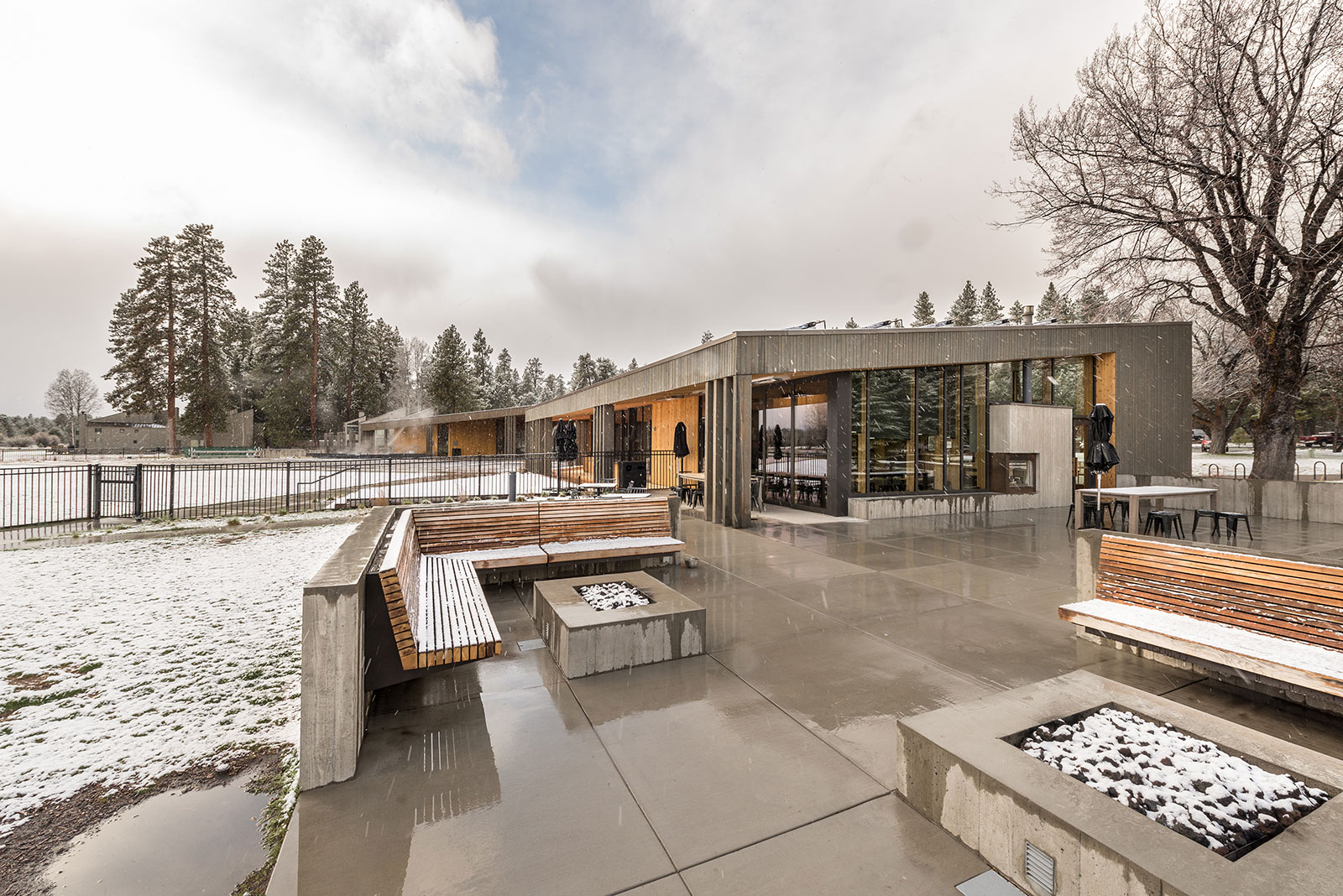
[The Pool House at Black Butte Ranch, Photo by BUILD LLC]
“With Lakeside, we set out to both honor and evolve the Northwest modern aesthetic of Black Butte Ranch. Because of the site’s stunning setting, it was essential that the building be secondary to the landscape—that the architecture serves as an aperture for the site, making connections to the land stronger and more immediate.”
–Hacker Architects, Architect of the new Black Butte Ranch recreation center
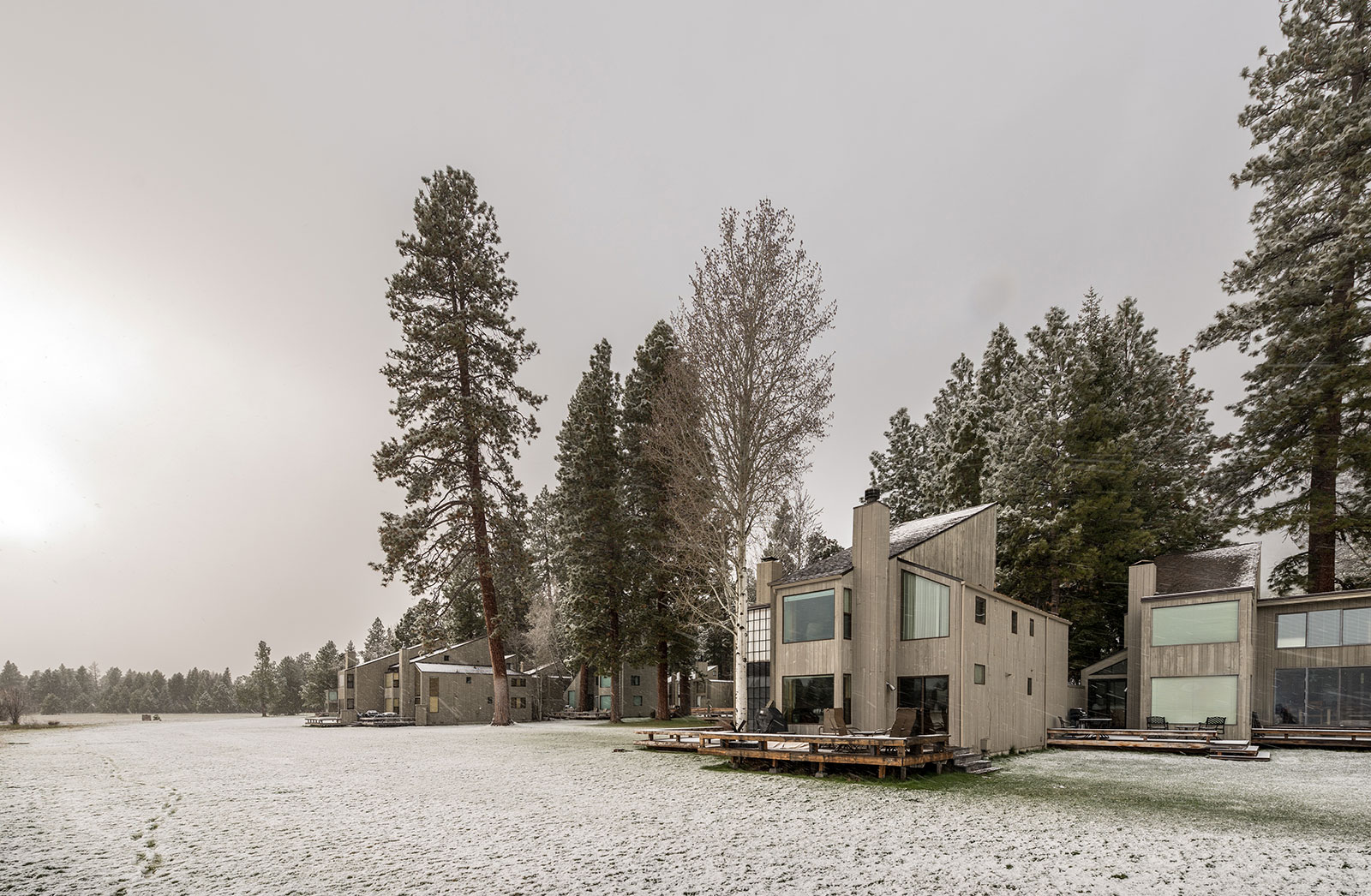 [Cabins at Black Butte Ranch, Photo by BUILD LLC]
[Cabins at Black Butte Ranch, Photo by BUILD LLC]
“The architecture [at Black Butte Ranch] was a larger story about Pacific Northwest Modernism, and the region has a legacy of creating buildings that are self-confident interpretations of Modernism, but also subordinate themselves to the natural environment” –Corey Martin, Hacker Architects
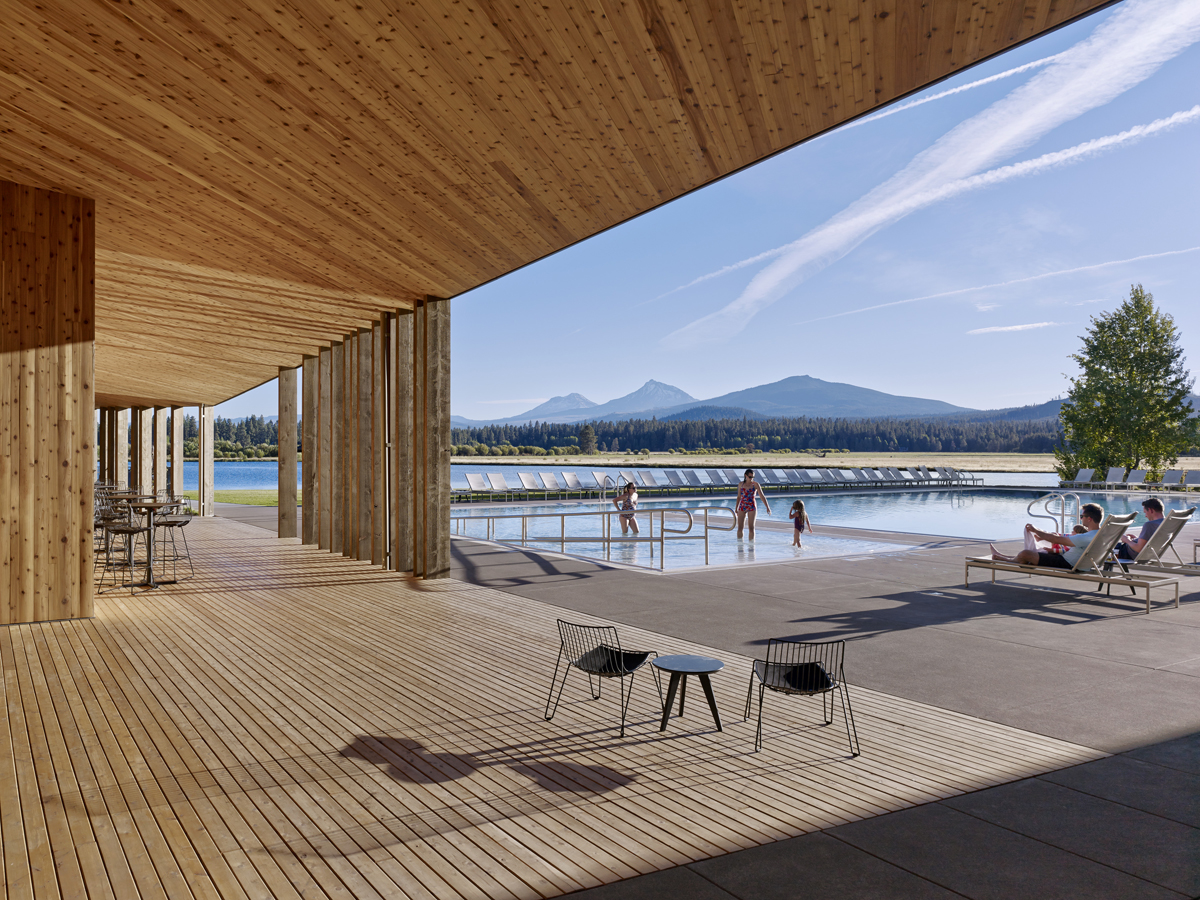
[The Pool House at Black Butte Ranch, Photo by Jeremy Bittermann]
“No man-made structure should even attempt to compete with the view of the Three Sisters and surrounding snow-capped peaks.”
-George Sheldon, Architect of Black Butte Ranch Lodge, from the book: There Is A Place; Black Butte Ranch
“The meadow and entry [were kept] wide open to make spaces that are completely visible when owners turn in from the highway. That creates ‘a feeling of generosity,’ each owner having a sense of proprietorship beyond his own piece of land.”
-Don Goodhue, Planner of Black Butte Ranch, from the book: There Is A Place; Black Butte Ranch
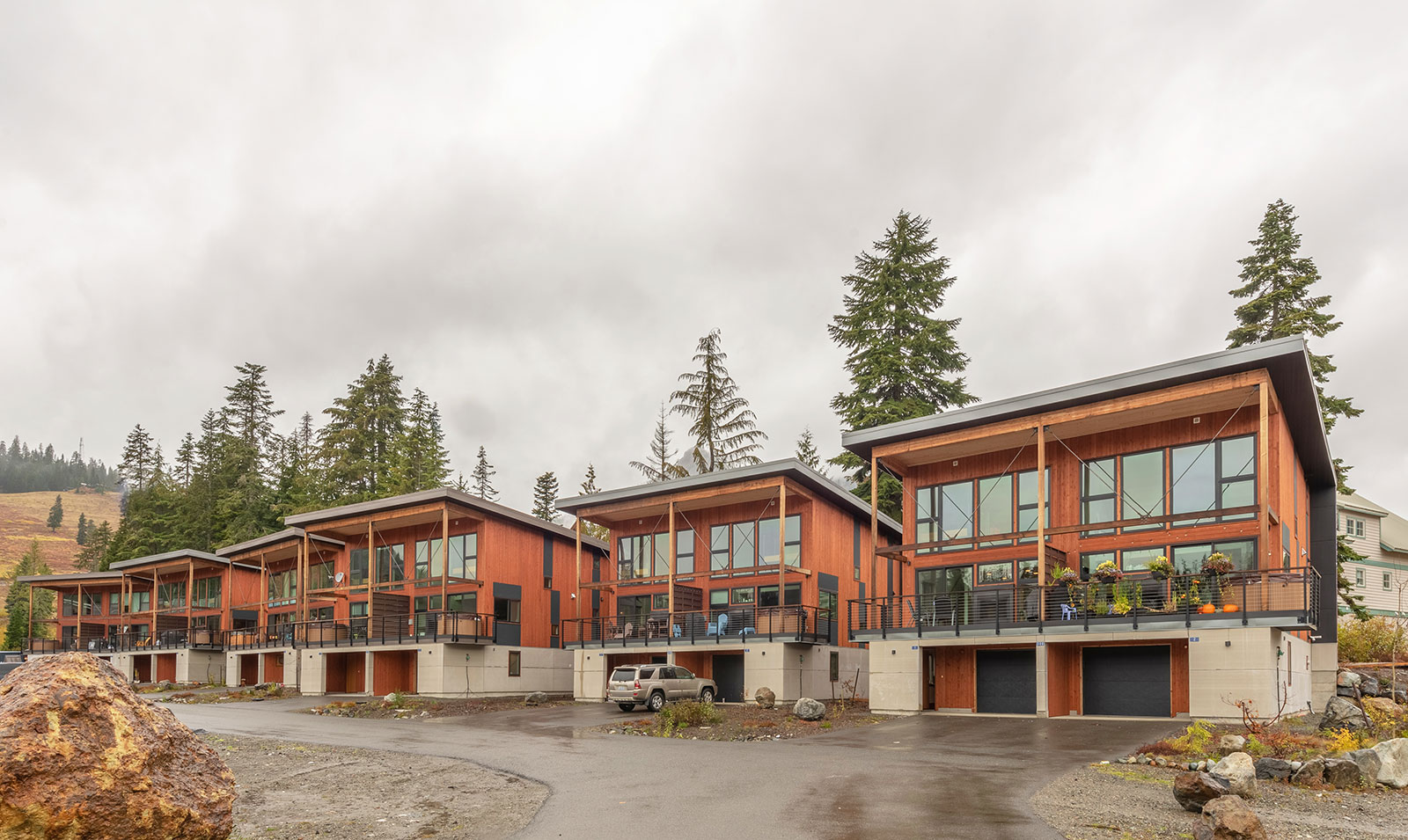 [Lofts at The Pass Life, Photo by BUILD LLC]
[Lofts at The Pass Life, Photo by BUILD LLC]
“Our holistic approach to development means more than creating the mountain town of the future. It involves building a community that’s open to everyone.”
–Evolution Projects
 [The Pass Life, Photo by BUILD LLC]
[The Pass Life, Photo by BUILD LLC]
“If there’s a higher-level consciousness around crafting and creating a space, people respond to it. But you don’t do it to sell stuff. You do it because you care.”
–Bryce Phillips, Evolution Projects
Evident in the thoughts and quotes about these three communities, the quality and harmony of these places stem from a life philosophy. The codes, covenants, and rules are necessary guardians, but it’s really the shared vision of being stewards and curators of places and communities that make these projects special. Sparing the reader the homework and cogitations of our study, we came up with a list of what we believe to be the essential DNA behind these three communities.
Focus on Activities and Nature (rather than property and real estate)
At The Sea Ranch, the focus is on walks along the ocean bluff, horseback riding, and swimming. At Black Butte, it’s golf, swimming, hiking, skiing, cycling, and fishing. At The Pass Life it’s skiing, hiking, biking, and snowshoeing. Each of the communities also has a thoughtfully designed community space for gathering and dining.
Cluster the Dwellings and Share the Land
Dwellings at The Sea Ranch are strategically clustered together leaving natural spaces open to all. Cabins are discretely tucked together into the trees at Black Butte Ranch so that contiguous forest remains as the primary experience. At The Pass Life, lofts are paired into common structures and the structures are tightly organized. Each requires that people appreciate their neighbors and enjoy sharing the natural spaces with each other.
Shared Stewardship
Owners within each community own land that is considered commonly shared space and it’s understood that everyone takes care of it. An organic and linked whole is more important than the constituent parts.
Visual Order
Each community shares a common understanding and appreciation of keeping things neat and tidy. Owners make decisions about their home and land based on the good of the overall community. A shared discipline with the built-environment benefits everyone.
Environmental Sensitivity
Touch the land lightly and appreciate nature going about its usual course. A shared resistance to the domination of nature keeps structures modest and environmentally unobtrusive.
Localized Design
There is a mutual agreement of a design language specific to each particular place. Each community establishes its own architecture that responds to the environment and spirit of the place.
There are probably many more examples, but these 6 have made themselves apparent to us over the years. It’s difficult to ignore the frequency of the words – share, appreciate, and community – in our list above and perhaps they are the true DNA of harmonious community (planned or not).
 [House at The Sea Ranch, Photo by BUILD LLC]
[House at The Sea Ranch, Photo by BUILD LLC]
Important development factors were also at play to realize these projects. The Sea Ranch, Black Butte Ranch, and The Pass Life were each built by brave young visionaries willing to challenge the status quo. The Sea Ranch was founded by a group of young architects and landscape architects willing to go toe-to-toe with politically backed opposition groups. Black Butte was founded by a handful of young locals whose average age was 30, none of whom had ever had any experience in resort development. The Pass Life was started by 36-year-old developer convinced that he’d wake up to picketers on his lawn for trying to build the project. In addition to the initial vision, determination, and hard work, the development teams behind each community have a vested interest to follow the vision through over the life of the project. So while the covenants and codes provide a basic framework for how to achieve specific results to shape a planned community, it’s ultimately the intangible qualities and personal commitment that infuses projects like these with life and longevity.
Cheers from Team BUILD





